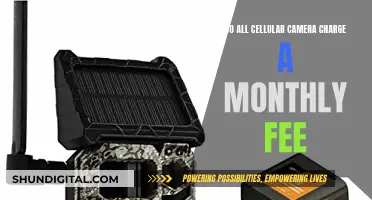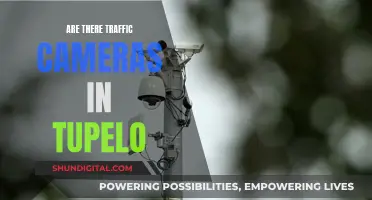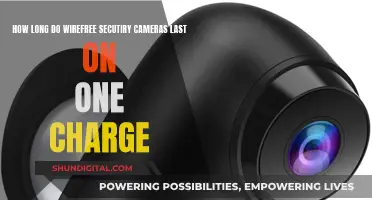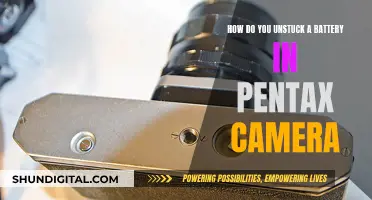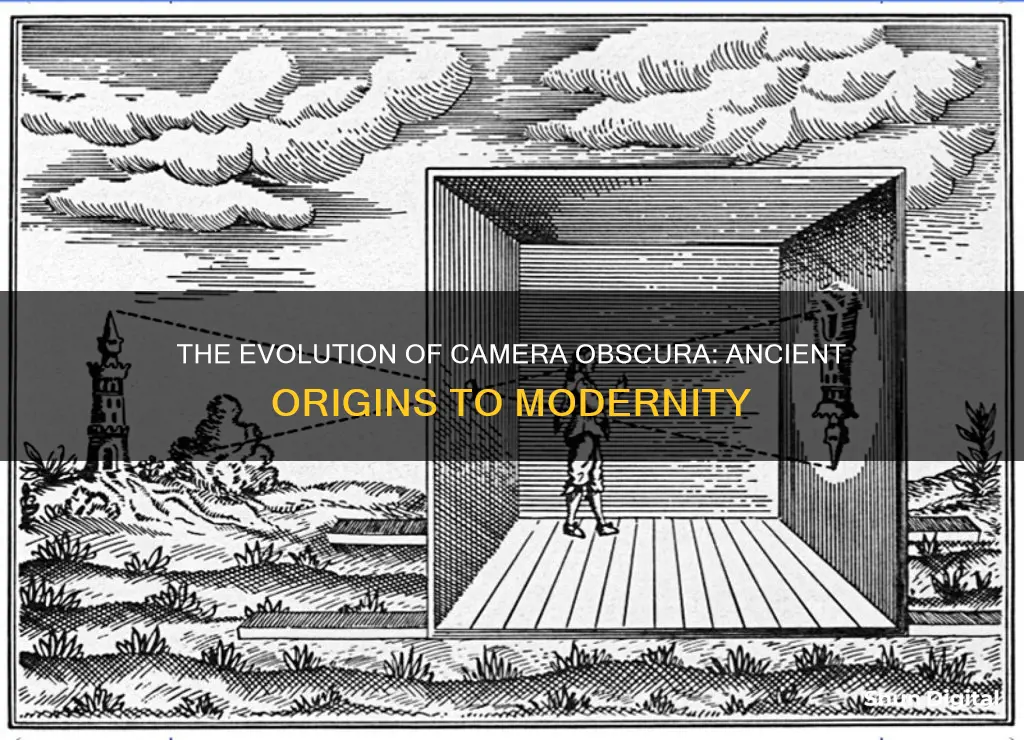
The camera obscura is a device that uses a dark room or box with a small hole or lens to project an image from outside onto a surface inside. The name comes from the Latin words camera and obscura, meaning dark room. The concept of the camera obscura has been known since ancient times, with the earliest written record found in the 5th century BCE by the Chinese philosopher Mozi (also known as Mo Ti). However, it wasn't until the 11th century that the Arabian scholar Alhazen (or Ibn al-Haytham) suggested using a screen to project the image, and the device was further developed in the following centuries. By the 17th century, smaller, portable versions of the camera obscura were being used, and it became a popular tool for artists and draughtsmen to create detailed and accurate sketches of landscapes and architecture. The camera obscura played a crucial role in the development of photography, as it served as the basis for the first photographic cameras in the 19th century.
| Characteristics | Values |
|---|---|
| Name | Camera Obscura |
| Other Names | Dark Chamber, Dark Room |
| Origin | Latin |
| Description | A box-shaped device used as an aid for drawing or entertainment |
| Function | Lets light in through a small opening on one side and projects a reversed and inverted image on the other |
| Parts | Opening (pupil), biconvex lens for refracting light, and a surface where the image is formed (retina) |
| Image | Relatively large aperture, sharp, colourful |
| Use | Used by draughtsmen and painters for making accurate, detailed sketches of scenes like landscapes or architecture |
What You'll Learn

The origins of the camera obscura
In the 4th century BCE, Greek philosopher Aristotle noticed that sunlight passing through gaps between leaves projects an image of a solar eclipse on the ground. This phenomenon was also noted by 6th-century Greek mathematician and co-architect of the Hagia Sophia, Anthemius of Tralles, who used a type of camera obscura in his experiments.
In the 9th century, Arab philosopher, mathematician, physician, and musician Al-Kindi also experimented with light passing through a pinhole, proving once again that light travels in a straight line.
By the 11th century, the Arabian scholar Alhazen (also known as Ibn al-Haytham) provided the first clear description of the formation of images by a small hole in a darkened room. He is also said to have invented the camera obscura, as well as the pinhole camera, which is based on the same idea. He carried out experiments with candles and described how the image is formed by rays of light travelling in straight lines.
In the 15th century, Italian polymath Leonardo da Vinci, familiar with Alhazen's work, published the first clear description of the camera obscura in Codex Atlanticus (1502). Over the years, he drew around 270 diagrams of the optical device in his sketchbooks.
In the 16th century, artists began to see the potential of using the camera obscura as a drawing aid. However, using the device sparked controversy, as many viewed the tracing method as cheating. Despite this, the camera obscura became a popular tool for artists in the 17th and 18th centuries, with masters such as Canaletto and Rembrandt known to have used it. There is also speculation that Dutch painter Johannes Vermeer used the camera obscura to capture the incredible detail in his exquisite paintings of domestic scenes.
The Evolution of Camera Lenses: Glass and Beyond
You may want to see also

The development of the camera obscura
The camera obscura, Latin for "dark chamber" or "dark room", is a device that uses a pinhole or lens to project light from outside onto a surface inside, creating an image. The development of the camera obscura can be traced back to the 5th century BCE, with the first written record of the theory found in the studies of Chinese philosopher Mozi (470–390 BCE).
Mozi, also known as Mo Ti, noted that an image produced by a camera obscura is flipped upside down because light travels in a straight line. This phenomenon was also observed by Greek philosopher Aristotle in the 4th century BCE, who noticed that light passing through gaps between leaves during a solar eclipse projected an image of the phenomenon onto the ground. In the 6th century CE, Greek mathematician Anthemius of Tralles, co-architect of the Hagia Sophia, used a type of camera obscura in his experiments.
In the 11th century, Arab scientist Alhazen (also known as Ibn al-Haytham) is said to have invented the camera obscura and the pinhole camera. He carried out experiments with candles and described how an image is formed by rays of light travelling in straight lines. By the mid-16th century, lenses were being used to increase the brightness and sharpness of the image.
In the 15th century, Italian polymath Leonardo da Vinci published the first clear description of the camera obscura in his Codex Atlanticus (1502). Da Vinci drew around 270 diagrams of the optical device and compared it to the human eye. He wrote:
> If the facade of a building, or a place, or a landscape is illuminated by the sun and a small hole is drilled in the wall of a room in a building facing this, which is not directly lighted by the sun, then all objects illuminated by the sun will send their images through this aperture and will appear, upside down, on the wall facing the hole. You will catch these pictures on a piece of white paper, which placed vertically in the room not far from that opening, and you will see all the above-mentioned objects on this paper in their natural shapes or colours, but they will appear smaller and upside down, on account of crossing of the rays at that aperture. If these pictures originate from a place that is illuminated by the sun, they will appear coloured on the paper exactly as they are. The paper should be very thin and must be viewed from the back.
In the 16th century, Italian scholar Giambattista della Porta improved the camera obscura by adding a concave lens near the pinhole. He also compared the human eye to the camera obscura. In 1604, German astronomer Johannes Kepler used the term "camera obscura" for the first time and created a portable version.
By the 17th century, smaller, portable versions of the camera obscura had been developed, including tents, sedan chairs, and pocket models. Portable camera obscuras were widely used by artists as aids for sketching, with the most popular form being the reflex box camera obscura. These cameras were the basis for early photographic cameras.
Galaxy S8 Camera Mode: Where Is It?
You may want to see also

The use of the camera obscura in art
The camera obscura was an important tool in the history of art, particularly in achieving perspective. The device was essentially a dark room with a small hole in one wall, through which light entered and projected an upside-down image of the outside world onto the wall opposite the hole. The name "camera obscura" is Latin for "dark chamber".
The camera obscura was first described by Renaissance artist and inventor Leonardo da Vinci in 1502. Da Vinci drew around 270 diagrams of the device in his notebooks, recognising its potential as a drawing aid. He wrote:
> If the facade of a building, or a place, or a landscape is illuminated by the sun and a small hole is drilled in the wall of a room in a building facing this, which is not directly lighted by the sun, then all objects illuminated by the sun will send their images through this aperture and will appear, upside down, on the wall facing the hole. You will catch these pictures on a piece of white paper, which placed vertically in the room not far from that opening, and you will see all the above-mentioned objects on this paper in their natural shapes or colors, but they will appear smaller and upside down, on account of crossing of the rays at that aperture. If these pictures originate from a place that is illuminated by the sun, they will appear colored on the paper exactly as they are. The paper should be very thin and must be viewed from the back.
The camera obscura allowed artists to trace lines and shapes from a projected image onto their canvas, rather than having to meticulously measure out the lengths and angles of a subject or scene. This caused some controversy, as many viewed the tracing method as cheating.
In the second half of the 16th century, smaller, portable versions of the camera obscura were developed. These were made from wooden boxes with lenses, allowing users to adjust the focus. Some also featured an angled mirror, allowing the image to be projected the right way up.
Venetian nobleman Daniele Barbaro noted the benefits of the camera obscura for artists in 1568:
> There on the paper you will see the whole view as it really is, with its distances, its colors and shadows and motion, the clouds, the water twinkling, the birds flying. By holding the paper steady, you can trace the whole perspective with a pen.
The camera obscura was used by artists such as Francesco Guardi and Canaletto to render the correct perspective of views seen from eye level.
Trail Cameras: Raw vs JPEG Image Formats
You may want to see also

The camera obscura as entertainment
The camera obscura has been used for entertainment since the 13th century, when Arnaldus de Villa Nova used it to project live performances. In the 1650s, a French entertainer used the camera obscura to project images of palaces, ballet dancing, and sword fighting, to the surprise and delight of Parisian audiences.
In the Victorian era, camera obscuras became a popular seaside attraction, with many being built at seaside and tourist resorts. These were large camera obscuras, where the viewer was inside the camera, looking directly at the image.
The camera obscura was also used as a drawing and painting aid, with artists like Vermeer and Canaletto using it to achieve perfect perspective in their work.
Charging Camera Batteries: Power Bank Essentials
You may want to see also

The camera obscura as a precursor to photography
The camera obscura, meaning "dark chamber" in Latin, is a device that projects an image of its surroundings onto a surface through a small hole or lens, usually in a darkened room. This optical phenomenon has been known since antiquity, with the earliest written records found in the 5th century BCE by the Chinese philosopher Mozi. However, it was only in the 19th century that the camera obscura was developed into the photographic camera we know today.
The Early Years
The basic principle of the camera obscura is simple: light passes through a small hole or aperture into a dark room and projects an inverted and reversed image of the outside world onto the opposite wall. This idea was first described by Mozi, who noted that light passed through a pinhole and created an inverted image. This was further explored by Greek philosopher Aristotle in the 4th century BCE, who observed that sunlight passing through gaps between leaves projected an image of solar eclipses onto the ground.
Development and Improvement
Over the centuries, various scientists and philosophers experimented with the camera obscura, including Arab physicist Ibn al-Haytham (or Alhazen) in the 11th century, who provided the first experimental and mathematical analysis of the phenomenon. In the 16th century, the camera obscura began to be used as an aid for drawing and painting. Italian polymath Leonardo da Vinci published the first clear description of the device in 1502, and it was during this time that the term "camera obscura" was first used.
On the Road to Photography
The camera obscura continued to be a subject of interest for scientists and artists alike. In the 17th century, German astronomer Johannes Kepler studied the mathematical laws of mirror reflection and developed the theory of lenses. This work, along with that of other scientists, provided the artistic community with the tools to improve their craft. By the 18th century, more portable versions of the camera obscura were being used by both amateur and professional artists.
The Birth of Photography
The final step towards photography was to capture and fix the projected image. The first attempts were made by Tom Wedgwood in 1800, who experimented with coating paper with silver nitrate and exposing it to sunlight in a camera obscura, but was unsuccessful. It was French printer Joseph Niepce who, in the early 1800s, made a breakthrough by coating plates with light-sensitive chemicals and exposing them to sunlight, creating the world's first permanent photograph. This process was further refined by French artist Louis Daguerre, who reduced the exposure time and developed the daguerreotype, a key step in the evolution of modern photography.
Unlocking Portrait Mode: Capturing Professional Photos on Your Mobile
You may want to see also
Frequently asked questions
A camera obscura is a device in the shape of a box or room that lets light in through a small opening on one side and projects it on the other.
In its simplest form, a camera obscura is a dark room with a small hole in one wall. When it’s bright outside, light enters through the hole and projects an upside-down image of the outside world onto the wall opposite the hole.
The camera obscura was made by creating a small hole in the window blind of a darkened room, projecting an inverted image of the scene outside on the opposite wall. The image could be made clearer by reducing the size of the hole, but this would also reduce its brightness. The addition of a lens created a larger aperture, allowing for a sharper and brighter image.


